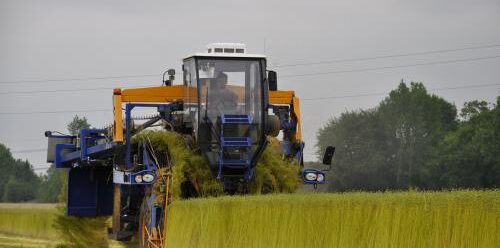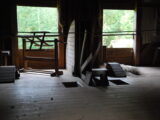It is undisputed that flax accounts for less than 1 percent of global fibre production. Further, especially up-to-date figures are much harder to find. An attempt at a summary.
According to the website of the European Confederation of Flax and Hemp (CELC), 80 % of the world's production of flax for the textile industry comes from Europe, with France being the world market leader, followed by Belgium and the Netherlands. The agricultural industry association sees China as the largest producer in terms of area with 260,000 hectares, ahead of France with 122,000 hectares. However, no differentiation is made here as to whether the quantity produced is only used for the textile industry or also for other technical industries and whether Europe is actually the market leader for high-quality flax textile fibres. Russia, Belarus, Ukraine and Egypt also have smaller industrial flax cultivation.
If you set high quality standards for fibre yield, there is no way around flax from France and Belgium, and this is mainly due to the climate. Constant alternation of sun and rain, steady, not too strong winds, no late frosts and moderate temperatures in May and June make flax the best fibre material. This also means that the world's highest yields per unit area are achieved in Western Europe. 70 to 80 per cent of these yields are exported to China, because despite the better quality, the flax yarns for most linen products do not come from Europe.
China is the largest exporter of flax yarns and linen fabrics. The largest linen factory in the world, based in Harbin, China, produces 1000 million metres of linen per year. The European centre of linen yarn and fabric production is in Italy. In 2017, Italy produced around 15.8 million square metres of linen.
Interest in the natural fibre is growing among consumers, but not only among those who can afford or want high-quality products. As a result, cheap Chinese production is also on the rise, further reducing the quantities of flax available on the market.
During a conversation with Jakob Leitner from Leitner Leinen in Ulrichsberg, Upper Austria, it becomes clear that European linen production is heading for a problem. The entrepreneur, who only processes linen yarns from Italy, is increasingly confronted with supply difficulties. He is rather pessimistic about the future when it comes to being able to source his raw material from Europe in five years' time.








